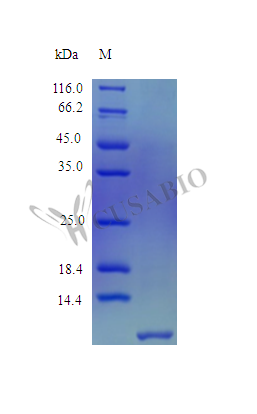Our Recombinant Human DEFB104A protein is an invaluable resource for researchers in the field of microbiology. This Beta-defensin 104, also known as DEFB104A, is expressed in E. coli, featuring the 23-72aa expression region of the full-length mature protein. The tag-free protein is supplied as a lyophilized powder, making it easy to reconstitute with sterile water or buffer for various experimental applications.
Quality and performance are our top priorities, and our Recombinant Human DEFB104A protein demonstrates a purity of >98% as determined by SDS-PAGE and HPLC analysis. In addition, endotoxin levels are maintained below 1.0 EU/µg, as assessed by the LAL method. The protein exhibits full biological activity in a chemotaxis bioassay using human monocytes, with an effective concentration range of 0.1-100.0 ng/ml.
As an antimicrobial peptide, DEFB104A has attracted significant attention in recent years. Studies by Weinberg et al. (2012)[1] and Prado-Montes de Oca (2011)[2] have highlighted its role in the innate immune response, while Cullen et al. (2021)[3] explored its antibacterial properties against a range of pathogens. These investigations underscore the importance of DEFB104A as a potential therapeutic target in combating infectious diseases.
References:
1. Weinberg A, et al. Defensin genes and the genetics of human host defense. Annu Rev Genet. 2012;46:23-47.
2. Prado-Montes de Oca E. Human defensins: a novel approach for the treatment of skin diseases. Curr Opin Investig Drugs. 2011;12(11):1223-30.
3. Cullen TW, et al. Antibacterial properties of human defensins: New insights into their potential therapeutic applications. J Leukoc Biol. 2021;110(1):25-39.




